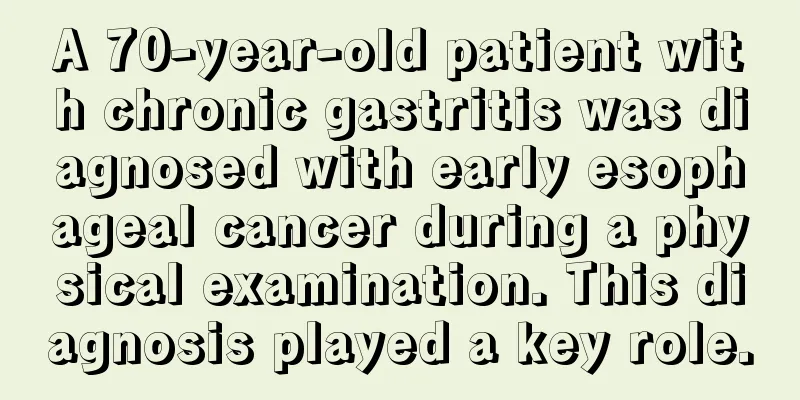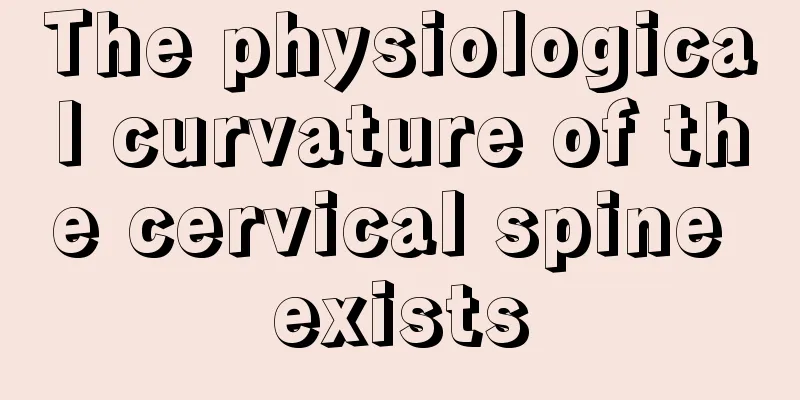A 70-year-old patient with chronic gastritis was diagnosed with early esophageal cancer during a physical examination. This diagnosis played a key role.

|
For tumor diseases, we have always emphasized early detection and early treatment, and the key point is to detect potential abnormal symptoms in time, and to conduct targeted examinations to find the lesion area. However, early tumors may have no symptoms. For example, early dysplasia of esophageal cancer may not cause burning or chest pain. How should it be discovered? In April this year, our hospital treated a patient with early esophageal cancer. She is a typical example of early asymptomatic manifestations. So how did the patient discover the lesion? Case sharing: Symptom examination: Gastroscopy revealed that the posterior wall of the esophagus was slightly edematous at 16-20 cm from the esophagus, with a little white fur on the surface. NBI: The mucosa was brown, iodine staining: 16-20 cm, the mucosa at 5-8 o'clock was not colored. How to detect early esophageal cancer in the golden period <br/>Early diagnosis and treatment is recognized as the golden period for the treatment of esophageal cancer and other tumor diseases. The patient Ms. Sun in the above case was lucky to discover the lesion and took regular treatment. The question we want to discuss is how to detect early cancer when there are no symptoms. Key items for diagnosing early esophageal cancer <br/>From the above cases, we can clearly see that gastroscopy plays a vital role in the diagnosis and treatment of early esophageal cancer. Whether there are obvious symptoms or no symptoms, the digestive system organs are inside the body. Simply relying on physical examination, blood test, and tumor cell detection cannot accurately determine the condition; moreover, early dysplasia and tumor properties require pathological testing. If you cannot enter the organs, you cannot collect pathological samples. |
>>: How to treat advanced renal cancer? Mainly drug treatment
Recommend
Tips for not washing your hair during confinement
Confinement is a traditional way for women to rec...
Nursing of dry mouth after radiotherapy for nasopharyngeal carcinoma
During radiotherapy for nasopharyngeal carcinoma,...
Early symptoms of lung cancer and tracheal cancer
Early symptoms of lung cancer and tracheal cancer...
How can lung cancer patients determine whether metastasis has occurred? You can determine it from the following aspects
Lung cancer is a disease that is easy to metastas...
Is propylene glycol harmful to the human body?
When it comes to the chemical reagent propylene g...
Acupuncture points for reducing fever
When there are some patients with high fever arou...
What kind of chemotherapy drug is best for breast cancer metastasis to the lungs
What chemotherapy drugs are best for breast cance...
What are the benefits of using silkworm excrement to make pillows
The advantage of using silkworm droppings as pill...
What's wrong with my ankles?
The ankle is a joint in the leg. Sometimes if you...
How to remove stones in the lower calyx of the kidney
There are about seven or eight funnel-shaped tiss...
What should I do if it comes into contact with water after laser treatment?
Generally speaking, it is not recommended to touc...
Importance of tongue cancer diagnosis
Tongue cancer is a common malignant tumor in the ...
How to wash ink stains on clothes
If you accidentally get ink on your clothes, you ...
Nursing methods for patients with bone cancer who have pain symptoms
The first thing that bone cancer patients should ...
Symptoms of smiling depression, five tips to avoid smiling depression
Depression can be said to be a highly prevalent m...









